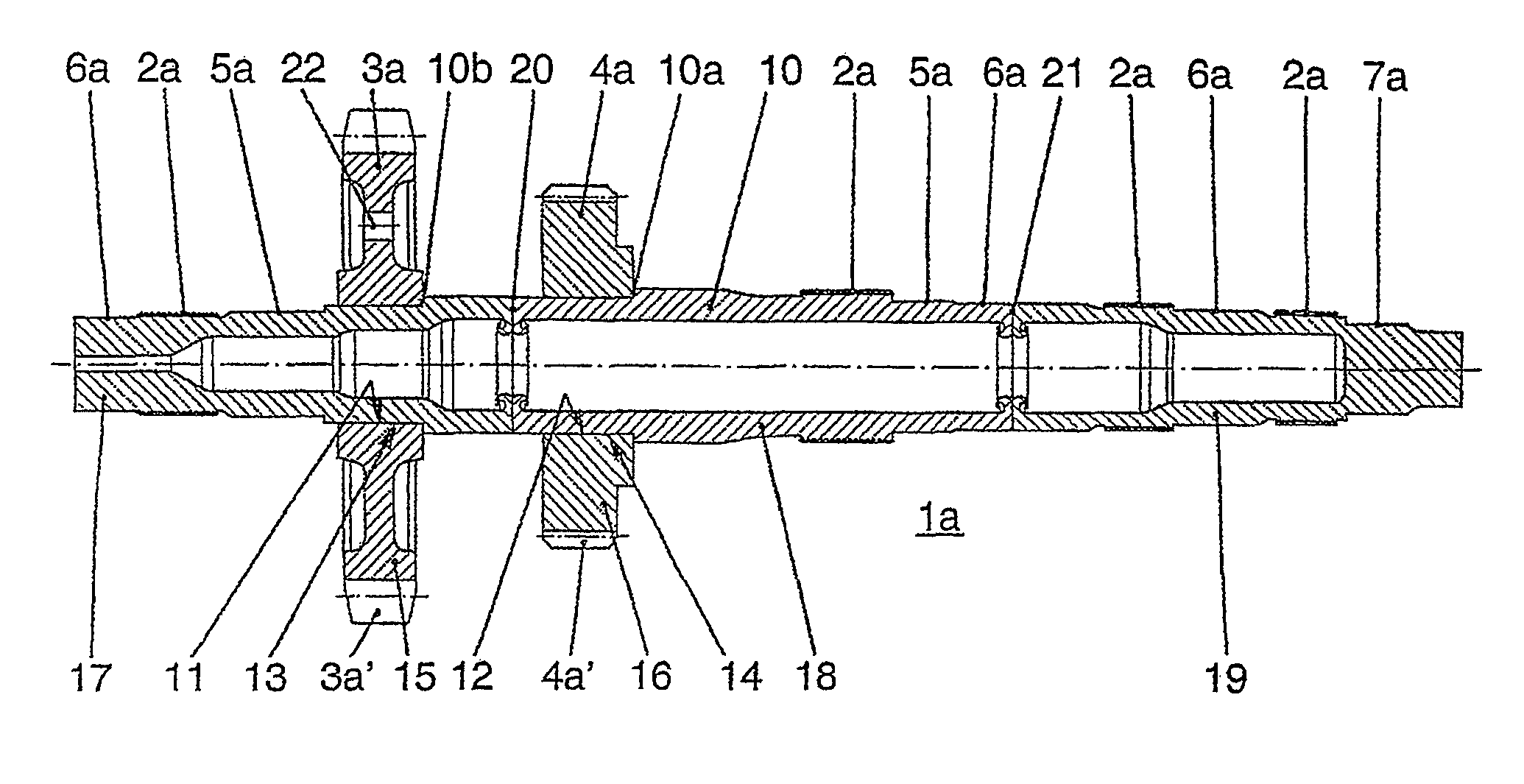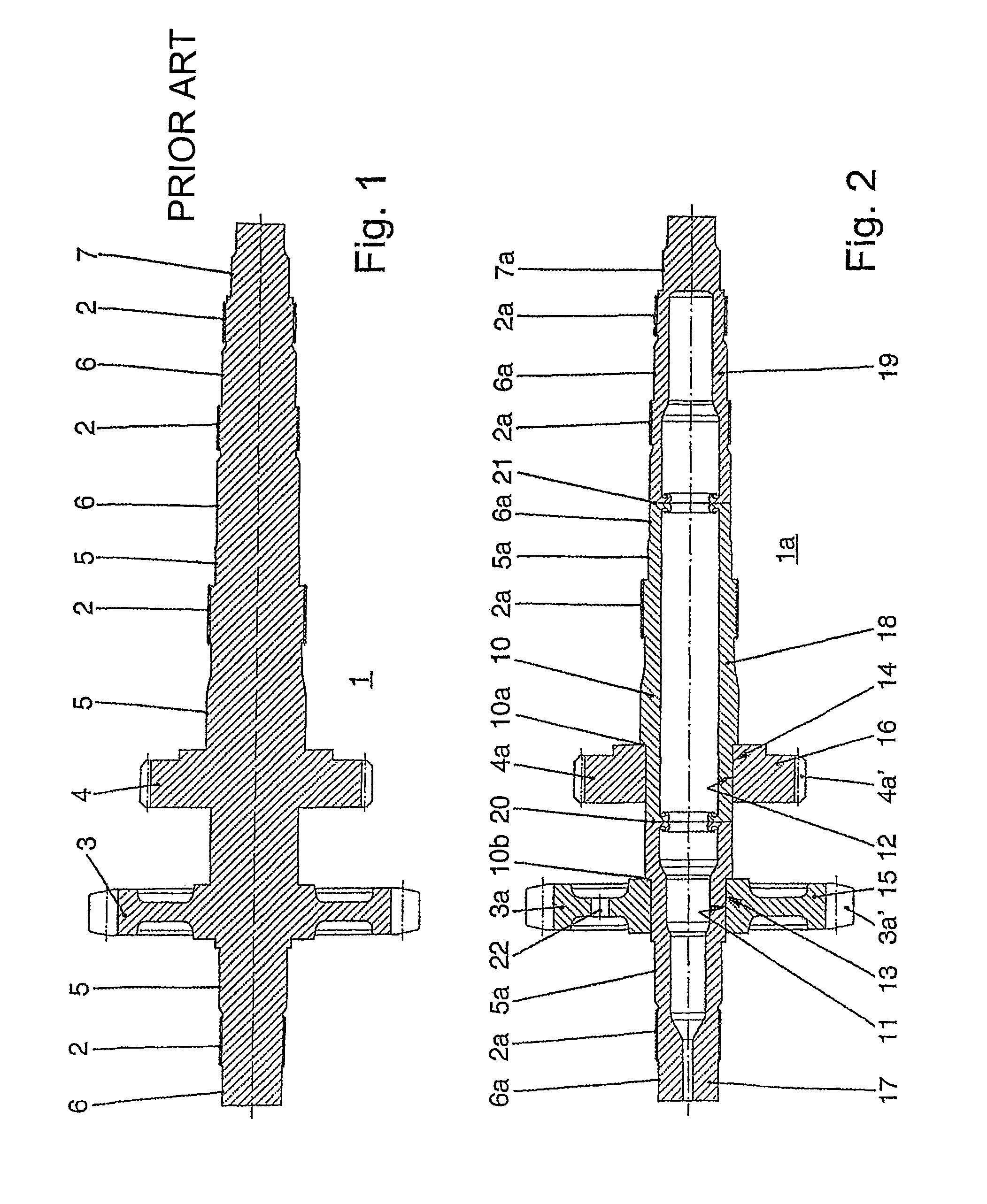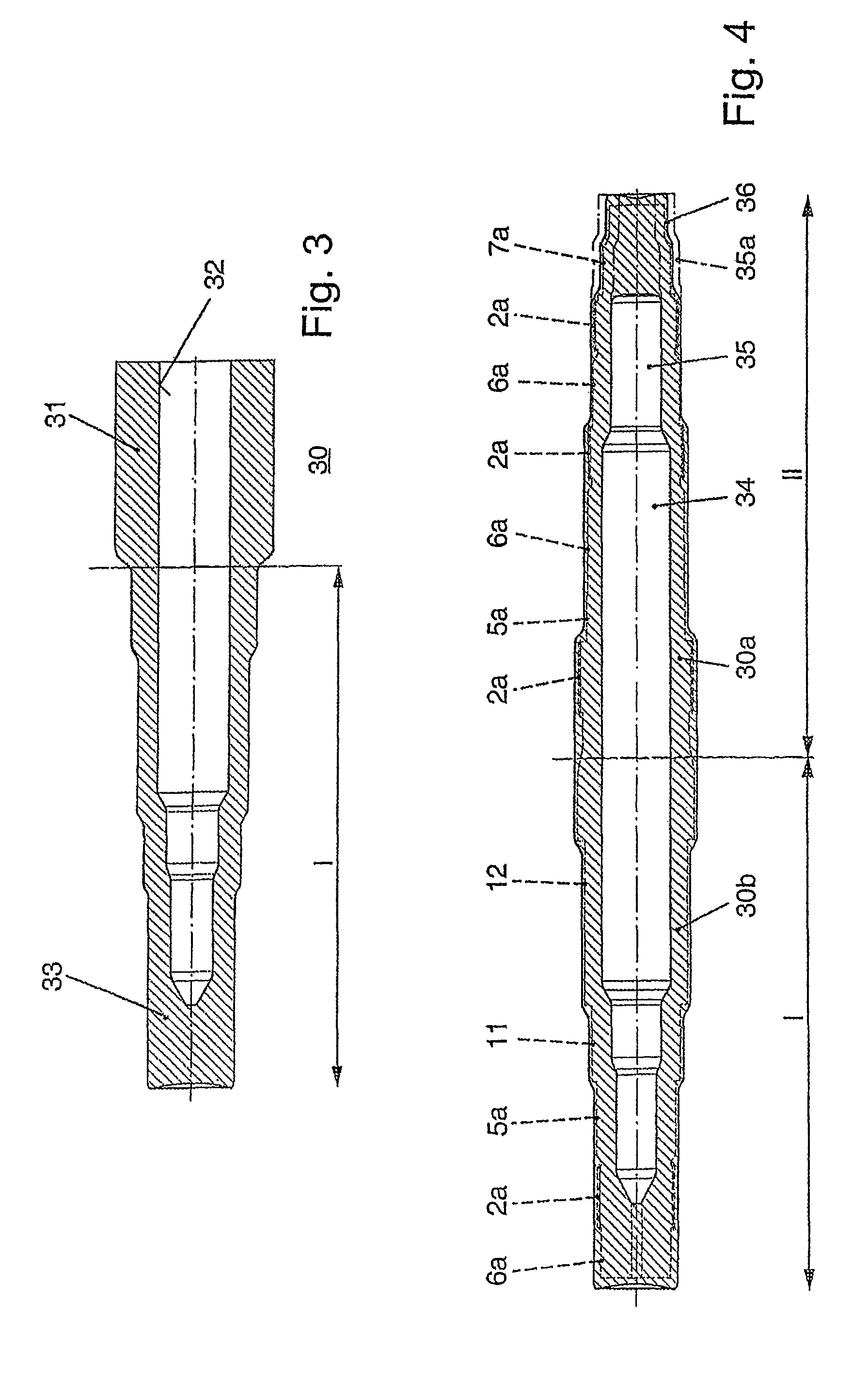Method of producing shafts
a production method and technology of shafts, applied in the field of transmission, can solve the problems of complex production, low production efficiency, and low production efficiency of known shafts, and achieve the effects of improving production efficiency, facilitating production and improving handling efficiency
- Summary
- Abstract
- Description
- Claims
- Application Information
AI Technical Summary
Benefits of technology
Problems solved by technology
Method used
Image
Examples
Embodiment Construction
[0042]The main and / or output shaft 1 from FIG. 1 is produced in one-piece as a forged part and comprises the following machined functional bodies and / or areas: the gearing 2 for the synchronization units; the gearwheels 3 and 4; the bearing races 5 for the roller bodies, e.g., of a needle bearing for mounting the idlers; the bearing seats 6 for mounting the transmission shaft; and the thread 7 for fastening a bearing output flange.
[0043]In contrast thereto, the main or output shaft 1a according to the present invention as shown in FIG. 2 comprises a shaft main body 10 and two gearwheels 3a and 4a fastened thereon, which are each produced by themselves, i.e. separately, and subsequently are secured to the shaft 10 by being axially pressed on against an axial stop 10a, 10b, e.g., using methods and / or using tools and devices such as those described in U.S. Pat. No. 6,286,196; U.S. Pat. No. 6,804,884 and / or US 2004 / 134063 as incorporated herein by reference. Consequently, torque-fixed c...
PUM
 Login to View More
Login to View More Abstract
Description
Claims
Application Information
 Login to View More
Login to View More - R&D
- Intellectual Property
- Life Sciences
- Materials
- Tech Scout
- Unparalleled Data Quality
- Higher Quality Content
- 60% Fewer Hallucinations
Browse by: Latest US Patents, China's latest patents, Technical Efficacy Thesaurus, Application Domain, Technology Topic, Popular Technical Reports.
© 2025 PatSnap. All rights reserved.Legal|Privacy policy|Modern Slavery Act Transparency Statement|Sitemap|About US| Contact US: help@patsnap.com



